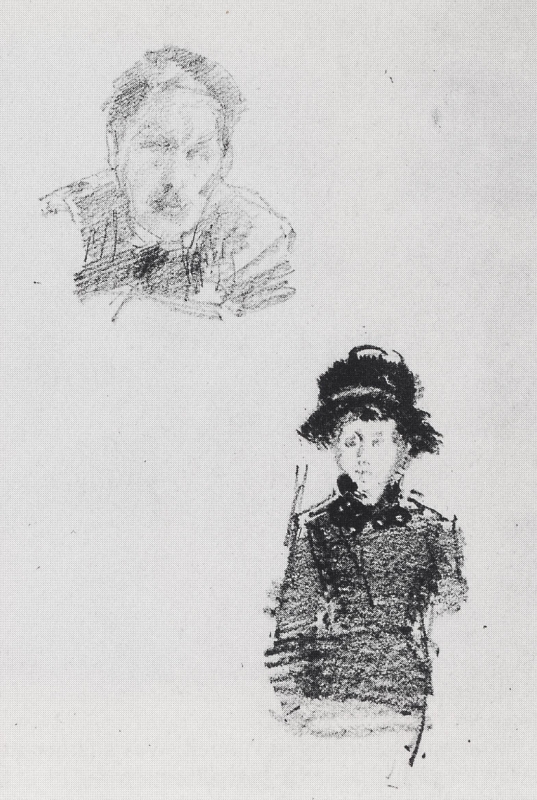Technique
The lithographic printer, Thomas Robert Way (1861-1913), described this as 'a trial on transfer paper', a potential lithograph. 1 Despite several descriptions of this as a lithograph, it was never transferred to stone nor printed. 2
Spink et al describe the paper as a coarse-grained lithographic transfer paper called papier viennois, with an irregular-textured coating. 3 It is similar to that used for Old Battersea Bridge, No. 2 c013, which was Whistler's first, and unsuccessful, experiment in using transfer paper (as an alternative to drawing directly on the lithographic stone).
The two figures were drawn using different materials. The man was drawn with a hard lithographic crayon, and the woman with 'a softer greasier crayon, combined with applications of brush and tusche on her hat and collar.' 4 Tusche is a black grease-like lithographic drawing ink, producing richer, more painterly effects than crayon.
Notes:
1: Way 1905 [more] (cat. no. 160).
2: i.e. Memorial Exhibition of the Works of the late James McNeill Whistler, First President of The International Society of Sculptors, Painters and Gravers, New Gallery, Regent Street, London, 1905 (cat. no. 148) as a lithograph, 'Two sketches', 10 x 7". Gerstenberg sale catalogue, 1922 (cat. no. 91), as 'Two sketsches. Lithographie. W.160. Kleine Knickfalte in der Blattmitte'.
3: Spink 1998 [more] , in vol. 1, 'Untransferred Lithographic Drawings', (cat. no. I), pp. 500, 502.
4: Ibid. See also Stephanie L. Strother, 'Cat. 19 Two Sketches, 1878/79: Curatorial Entry,' in Clarke, Jay A., and Sarah Kelly Oehler, eds., Whistler Paintings and Drawings at the Art Institute of Chicago, The Art Institute of Chicago, 2020, website (cat. no. 19).
Last updated: 11th December 2020 by Margaret






